The symptoms of neck pain are familiar to everyone: it pulls the muscles, it is impossible to bend and turn the head, and to look to the side, you have to turn the whole body. The culprit of the problem, as a rule, is the spine: injuries, hernias, scoliosis lead to the fact that a person feels pain in the back and neck. The discomfort forces him to heal himself. But if the pain radiating to the neck does not go away after home therapy, the next step is to see a doctor.
Neck pain in adults
Neck pain in women
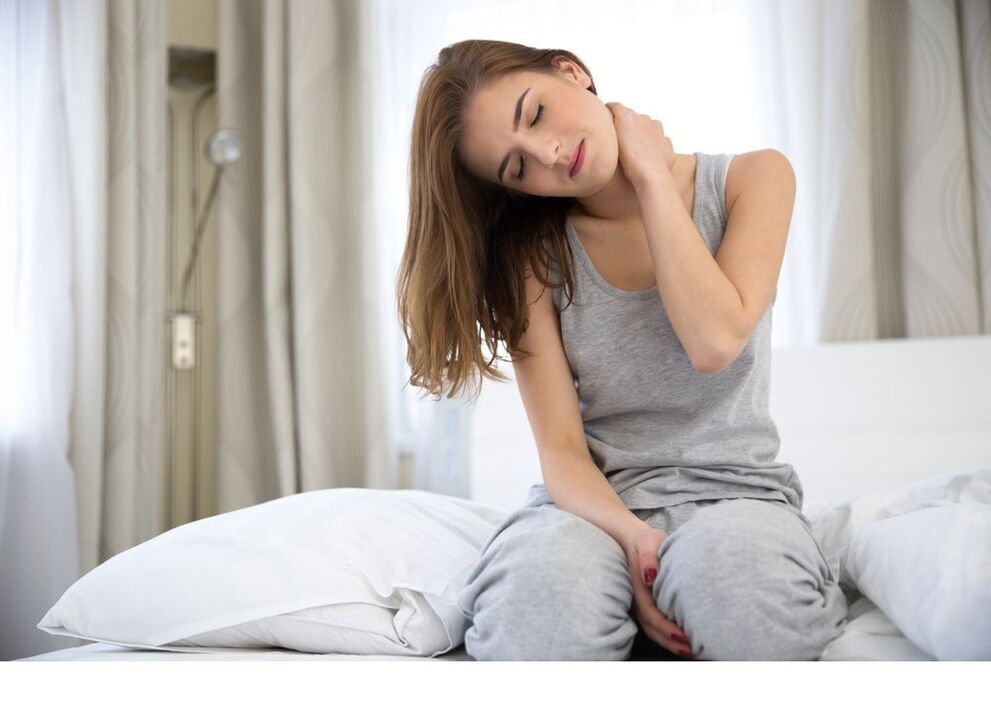
Neck pain during pregnancy
Back and neck pain often worries future mothers. The explanation is simple - by changing the weight and proportion of the body changes posture, increases the load on the spine.
How to deal with this nuisance? A special maternity bandage will help you keep your back in the correct position. To strengthen the muscles of the back and neck, it is useful to practice swimming and yoga (of course, with the permission of an obstetrician-gynecologist). You need to sleep in a comfortable position, on a hard mattress and a low pillow. But the most important thing is to consult a doctor, because any self-medication can negatively affect the condition of the mother and the unborn baby.
Neck pain in young mothers
Back and neck pain is common in young mothers. The matter is complicated by the fact that a woman during breastfeeding can not use many drugs, because harmful substances will enter the milk. How to help and prevent neck pain from interfering with a child's joy?
- Track your posture. As you carried the baby, the center of gravity shifted with the increase in the abdomen - you had to bend backwards to maintain balance, and your shoulders were tense all the time.
- Do not overload yourself physically, try to distribute the load on your back properly. Various wearables can help you with this. They distribute the child's weight on both shoulders and prevent back and neck fatigue.
- Baby care items need to be adjusted according to their height so as not to stand in an awkward position for long.
- It is very important to be in a comfortable position during breastfeeding, especially at night.
Neck pain in men

As a rule, neck pain does not differ by gender - it can occur in both men and women. However, there are some differences in anatomy: the male neck is decorated with an accentuated Adam's apple - a thickening of the thyroid cartilage, whose plates are placed at an angle to each other.
Pain in the Adam's apple in men can indicate a rather serious illness:
- Thyroiditis is an inflammation of the thyroid gland. With thyroiditis, patients are worried about pain in the neck when turning, pain in Adam's apple, above and below it, swelling of the neck.
- Thyroid cartilage cancer - its danger lies in the fact that the onset of the disease can be similar to a cold: sore throat when swallowing, difficulty turning the neck, and even breathing.
- Phlegmon of the thyroid cartilage is an extensive pus of the cartilage and soft tissues of the neck, which is life-threatening. Patients complain of chills and fever, pain when swallowing, loss of voice, difficulty breathing.
- Cartilage tuberculosis usually occurs with pre-existing pulmonary tuberculosis and is a complication of it.
- Kadik can be ill due to osteochondrosis. Violation leads to pain during swallowing, sneezing, coughing.
- Fractures, bruises and compression of the cartilage can lead to displacement, swelling of the neck and suffocation.
Neck pain in the elderly
Pain radiating to the neck, in the elderly, may indicate the development of the disease:
- Peak lung cancer (cancer with Pancost and Horner syndrome). The patient's disease in this case is associated with tumor growth in the nerve endings of the shoulder girdle and neck.
- Tumors of the neck, salivary glands.
- Coronary heart disease. The pain can spread from the chest to the neck and arms, causing symptoms similar to osteochondrosis.
- Polymyalgia rheumatica is an inflammatory disorder characterized by stiffness and pain in the muscles of the shoulder girdle and hips.
- Spinal metastases in various oncological diseases (it is no secret that the likelihood of getting cancer increases with age).
- Cervical subluxation as a complication of rheumatoid arthritis.
- The most common causes of neck and neck pain in the elderly are osteoarthritis and osteochondrosis of the spine, rheumatoid arthritis, and chronic connective tissue inflammation.
Neck pain in children

Severe neck pain in children occurs for the same reasons as in adults:
- Trauma
- Osteochondrosis
- Stress and anxiety
- Tumors
- Diseases of other organs that cause distant pain
Perhaps the most specific "childish" cause of neck pain is torticollis, when the child's head is turned sharply to the side. Torticollis is dangerous because it leads to curvature of the cervical spine and interferes with the formation of the facial skeleton.
Contrary to popular belief, the disease does not occur only during childbirth. Depending on how torticollis appeared, the following types are distinguished:
- Congenital - can occur in the womb if the fetus is not properly positioned, but most often it happens during childbirth, when the baby turns its head to the side and injures the neck muscles.
- Dermatogenic - when the neck is distorted by scars left by trauma or burns.
- Reflex - occurs in injuries, otitis, salivary gland disease.
- Neurogenic - due to muscle cramps after polio or encephalitis.
- Spastic - due to excessive tension of the cervical muscles.
- Traumatic - associated with a fracture of the spine.
Torticollis (with the exception of dermatogenic and neurogenic) is usually observed in newborns or manifests itself in the first months. The greatest risk of its occurrence occurs when:
- The fetus is in the buttocks during natural childbirth.
- The position of the fetus in the mother's womb is such that the wall of the uterus presses against the cervix.
- Childbirth is difficult, and the baby's mastoid muscle is damaged (with the formation of a scar).
- It becomes necessary to use tweezers and a vacuum for difficult births.
- The mastoid muscle is inflamed during intrauterine development, as a result of which the muscle tissue is replaced by fibrous in the area of inflammation.
- The mastoid muscle is pathologically hypertrophied and shortened.
- With a caesarean section.
How can you cure torticollis?
- The conservative method is with the help of a course of massage and physiotherapy, special orthopedic shaping of the child's head, wearing an orthopedic necklace and gymnastic exercises.
- Surgery - is performed if conservative methods have not yielded results. During surgery, the surgeon lengthens the sternocleidomastoid muscle and corrects the position of the child’s head.
Different types of neck pain
Sharp neck pain
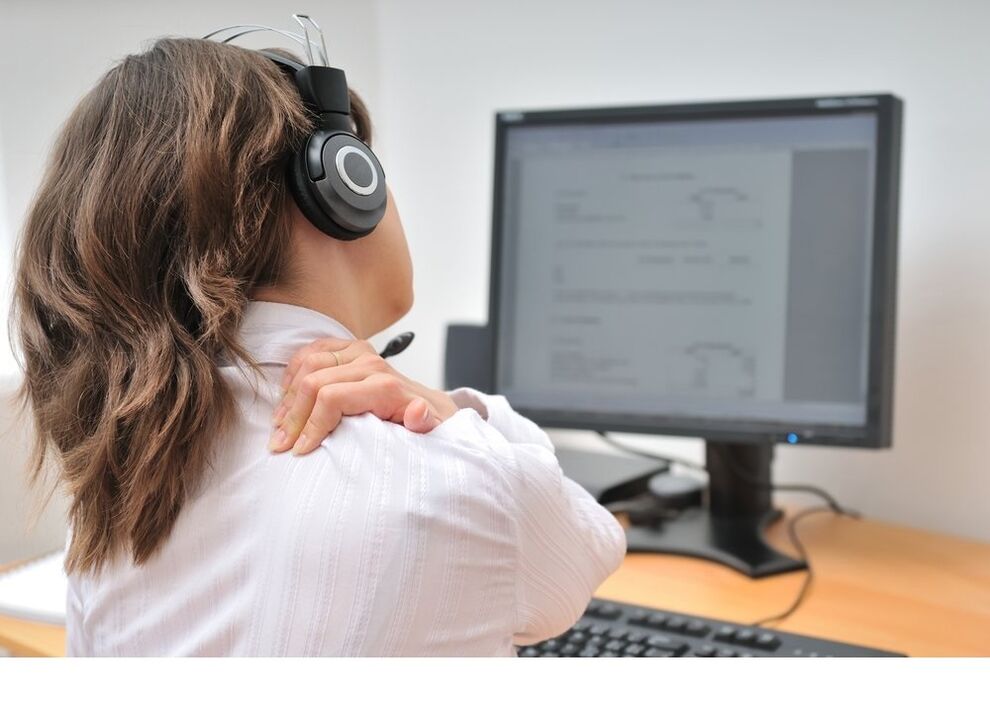
Why is there a sharp pain in the neck? There are two reasons:
- Trauma (fracture, stroke, contusion).
- Violation of nerve endings - this is the case with osteochondrosis, herniated intervertebral discs, spinal canal compression.
Treatment of pain depends on the cause and includes:
- Prescribing painkillers.
- Muscle relaxants and antispasmodics to relieve muscle cramps.
- Immobilization (immobilization) of the cervical spine.
- Exercise therapy and physiotherapy.
Severe neck pain
Severe neck pain is always uncomfortable. I would like to quickly understand why it hurts and recover. What are the causes of severe pain?
- Exacerbation of osteochondrosis, when unsuccessful movement, rotation or concussion of the body causes movement of the spine, injury to an existing hernia, compression of the spinal nerves.
- Radiculitis of the cervix (inflammation and pinching of the spinal roots).
- Cervicago - "lumbago" (sharp strong muscle spasm).
- Severe back and neck pain may occur after the injury.
Neck pain with osteochondrosis
The neck pain with osteochondrosis is very strong and gives the patient many uncomfortable minutes. As a result of muscle spasm or displacement of the vertebrae toward each other, the arteries that supply the brain can constrict or twist. In the most severe cases, this can lead to a condition similar to before a stroke, when a person is dizzy, everything floats in front of her eyes, sometimes speech and vision are lost.
Neck pain on the left side
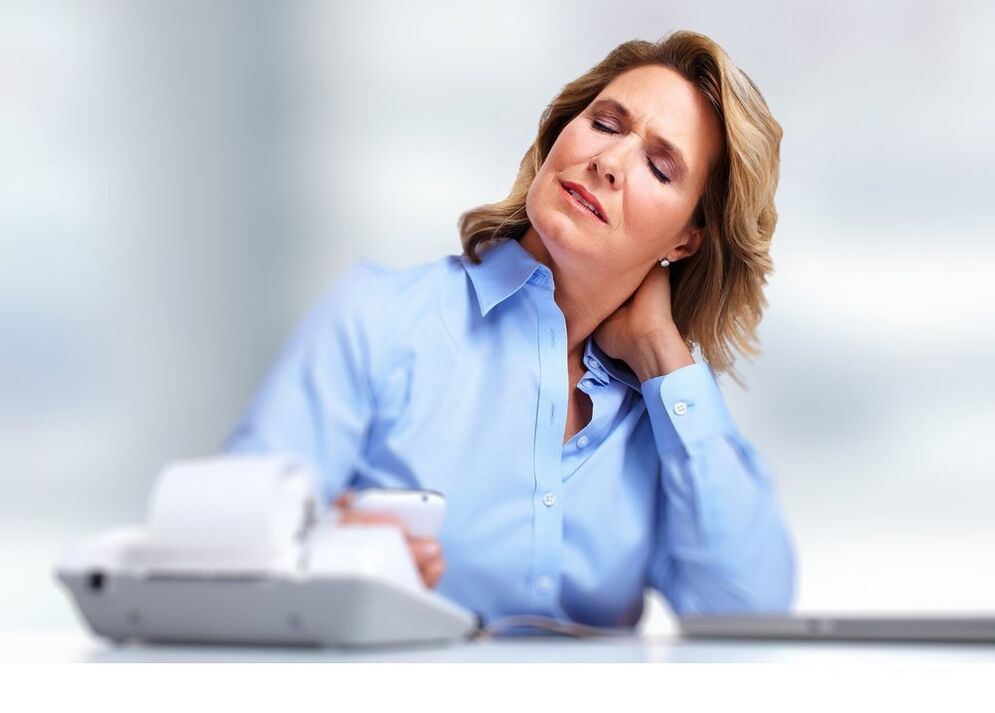
Pain in the neck on the left side is a possible symptom of a problem not only in the cervical spine, but also outside it. What can a person have if they have a sore neck on the left side?
- Heart disease (heart attack, coronary artery disease, angina pectoris).
- Upper left lung cancer.
- Injuries.
- Tumor metastases from other organs to the nodes of the left side of the neck.
- Infectious inflammation of the lymph nodes (due to tonsillitis, ARVI, tonsillitis).
Neck pain on the right side
Pain in the neck on the right side is an alarming symptom, but most often it is explained banally: a person has osteochondrosis with all the consequences. Such consequences include nerve entrapment, muscle cramps, intervertebral bulge and hernia, vascular disorders.
But there are other causes of neck pain on the right side:
- Biliary colic radiating to the neck and shoulders.
- Right-sided apical lung cancer with tumor invasion into the nerves above.
- Bruises, injuries, fractures of the collarbone and spine.
- Tumors of the cervical spine (metastases from other organs).
- If the pain is concentrated in the front right side of the neck, it can also indicate heart problems (heart attack, coronary artery disease).
- Inflammation of the lymph nodes due to ARVI and sore throat.
Neck and shoulder pain

Pain in the neck and shoulders is a classic sign of cervical osteochondrosis and accompanying complications (damage to the hernia, nerves, trunk of the spinal cord). In addition, simultaneous pain in the neck and shoulders is a symptom of such diseases:
- Gallstone disease during exacerbation, with biliary colic.
- Heart disease.
- Osteoarthritis of the shoulder.
- Cervical plexitis is an inflammation of the large nerve nodes of the spinal nerves.
- Periarthritis of the shoulders and shoulder blades - inflammation of the shoulder tendons and capsules of the shoulder joints.
- Myositis.
- Arthritis.
Neck and back pain
Pain in the neck and lower back is usually a sign of widespread osteochondrosis that has affected the entire spinal column. After all, it doesn’t happen that posture is good in one part of the spine and bad in another. In osteochondrosis, neck pain is mild when the disease is in remission, and strong, painful if it has worsened. Worsening begins with sharp pain in the neck and back by unsuccessful turning, movement, blow. It can be removed with the help of medication prescribed by a doctor, rest, light heat in the affected area, exercise therapy and physiotherapy.
Pain in the neck and nape
Neck and nape pain is most often a symptom of banal cervical osteochondrosis - a dangerous disease, but not fatal. But sometimes it indicates meningitis, and this disease is a threat to human life. The causative agents of meningitis - bacteria and viruses - attack the brain and spinal cord and cause inflammation of their membranes.
Numbness, pain in the neck and nape of the neck, stiffness of the occipital muscles, inability to simultaneously pull the head towards the chest, bending the leg at the knee - all these are meningeal symptoms that will immediately alert the doctor. Treatment of a dangerous disease is carried out in a hospital,
In addition to meningitis and osteochondrosis, injuries to the neck and back of the head can be injuries, occipital nerve neuralgia, hypertension, and muscle strain.
Causes and symptoms of neck pain
Trauma

The cause of neck pain sometimes becomes an injury due to which the cervical vertebrae are displaced or broken, the spinal nerves are damaged. Injuries can result from accidents, falls, injuries, poor diving, or sudden movement. Symptoms of a neck injury include:
- Improper bending of the neck, inability to turn the head, tension of the chest and neck muscles indicate a fracture of the lower vertebrae.
- Pain in the scalp and back of the head is an indicator of damage to the 1st cervical spine.
- Swelling and "bruising" can be the result of a neck injury.
- Neck pain when turning the head, shoulders, upper chest, painful headaches are a symptom of a whip injury, which occurs due to alternating sharp bending and lengthening of the neck (this can happen when the vehicle brakes abruptly).
Neoplasms
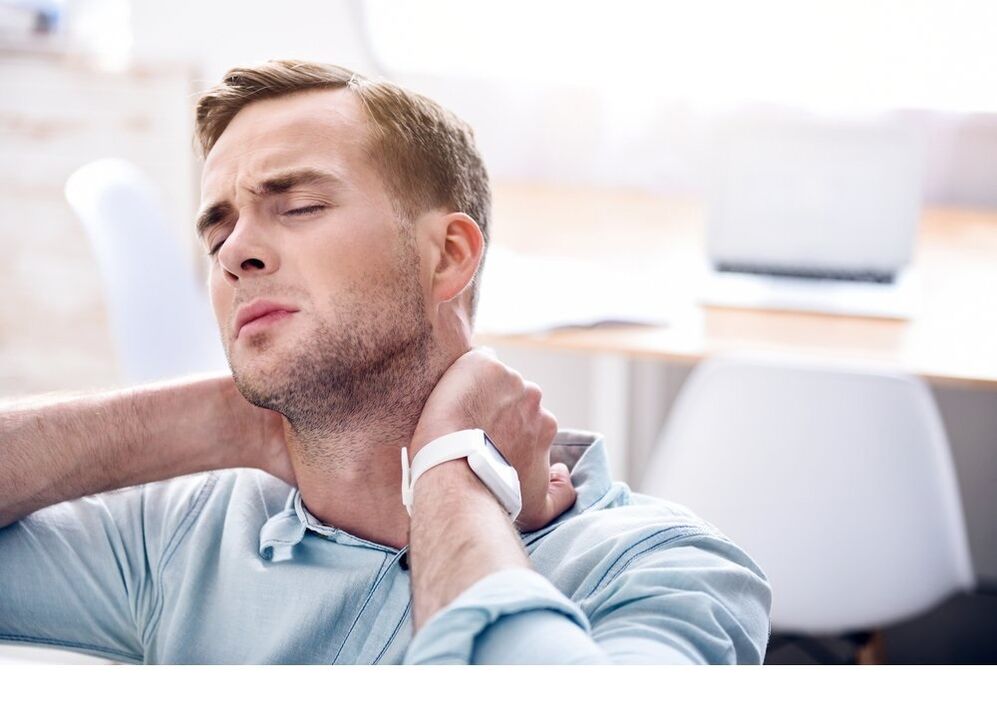
An extremely dangerous cause of neck pain is a malignant neoplasm. How is it possible?
- Neck pain as a symptom of a tumor in the upper part of the lungs. Germinates nerve bundles and blood vessels, which causes severe pain. A person may suffer from neck pain on the left or right side, depending on the location of the tumor.
- The symptom of neck pain sometimes indicates the development of lymphoma - cancer of the lymph nodes. Because many lymph nodes are concentrated in the neck, they grow as the disease progresses and it is difficult not to notice it. Other prominent signs of lymphoma are excessive sweating, seemingly unreasonable fever, and weight loss.
- Salivary gland cancer is a tumor that affects the salivary glands behind the ears, on the sides of the neck and palate. At an early stage, it is painless, only occasionally you may notice seals in the affected glands.
- A tumor of the larynx grows into its walls, visually representing a tuberous neoplasm. They are difficult to notice during a routine examination, so the cancer is unfortunately diagnosed at a late stage, when other manifestations become visible: a feeling of a foreign body in the throat, hoarseness and nasality of the voice, difficulty breathing nose. Laryngeal tumor is also dangerous because it is prone to early onset of metastases, which greatly worsens the patient’s prognosis of recovery.
- Thyroid cancer occurs with nodular nodules, pain in the front of the neck, and voice changes.
- In thyroid cartilage cancer, patients complain of difficulty swallowing and moving food in the larynx, a feeling of a foreign body, or a lump in the throat.
Reflected pain in diseases of other organs
Pain radiating to the neck does not always mean that the problem is in the neck itself. Sometimes it hurts due to the poor health of other organs, and then the pain is called reflected. What diseases can cause it?
- Cardiac (ischemic heart disease, heart attack, angina pectoris) - are accompanied by attacks, when the pain radiates to the shoulders, neck, and sometimes to the arm.
- Pain in the neck on the right, under the right shoulder blade and in the right shoulder occurs during an attack of biliary colic with stones in the gallbladder.
- Esophageal diseases (reflux, erosion, ulcer).
- Oncological diseases (lymphoma, tumor metastases) are the cause of human suffering when the neoplasm affects the nerve endings. Thus, cancer at the top of the lungs, when the tumor grows upwards, leads to pain in the neck and shoulders. Intracranial tumors, oncological diseases of the head also cause pain in the cervical spine.
- Abscesses and phlegmons on the head.
- It bleeds into the subarachnoid space between the brain and its sensitive tissues.
Psychological causes of neck pain
Symptoms of neck pain often occur along with muscle cramps. Spasm is not just a consequence of stress, injury or trauma - the cause can be stress, nervous shock and fatigue. Why is this happening?
The fact is that the body experiences stress as a threat to its well-being, and therefore mobilizes. There is a release of stress hormones into the bloodstream, the heart rate increases, and digestion, on the contrary, slows down. Muscle tone increases in response to hormonal changes. As soon as an alarming situation occurs, the body goes into normal mode. But if emotional stress takes a chronic form, muscle spasm becomes constant, and on its background develop diseases of the spine (osteochondrosis, hernia, disc protrusion).
Sedentary lifestyle, frequent computer work
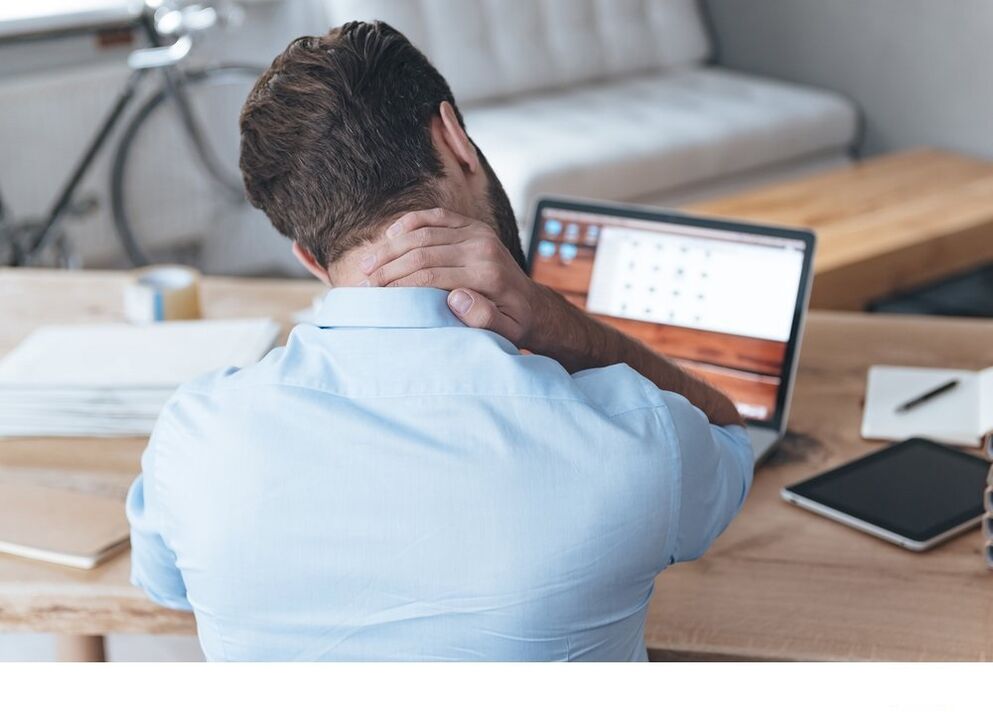
Neck muscle pain often occurs due to the fact that a person has a weakened posture, and the cause of impaired posture can be the weakness of the muscular corset. As a rule, this happens to people who are far from physical education, lead a sedentary lifestyle and work a lot at the computer. The situation is exacerbated by the fact that the workplace is often not properly organized and the person sits hunched over or awkwardly bent over. As a result, the pain radiating towards the neck becomes a constant companion, the usual muscle spasm is created, degenerative changes in the intervertebral discs begin, and osteochondrosis develops. Even with osteochondrosis, neck pain becomes a constant companion: periods of pain relief are replaced by worsening, and only competent treatment, change of lifestyle from sedentary to mobile, posture control, strengthening of neck and back muscles can interrupt this cycle.
Diagnosis of neck pain
How to determine the causes of neck pain and make a diagnosis?
- First of all, you need to collect a medical history:
- Life history. It is necessary to find out whether there have been injuries of the neck and shoulder girdle in the past, which diseases the person was ill with, and which of them have become chronic, whether there have been colds and hypothermia recently. For example, the fact of cholecystitis may explain the painful sensations in the neck - with biliary colic the pain sometimes radiates only to this area. At the same time, the cause of pain in the neck on the left side can be: a tumor in the upper part of the left lung, muscle inflammation and compression of the spine of the spine on the left side.
- History of the disease - how and how it started, with which doctor the patient consulted, what examinations and treatment were prescribed, how it affected the course of the disease (whether it got better or worse).
- A visual examination will help make the diagnosis - the doctor palpates the lymph nodes and muscles, checks the mobility of the head and neck, assesses the condition and color of the skin, looks for visible damage and trauma.
- If there is a suspicion that the pain in the neck and shoulders is a consequence of diseases of other organs, the patient should be referred to a specialized specialist - oncologist, endocrinologist, gastroenterologist, cardiologist, etc.
- In other cases, radiation diagnostics will help clarify the diagnosis: MSCT, CT, X-ray.
- Sometimes electroneuromyography (ENMG), an electrophysiological study, is a useful diagnostic procedure that determines the condition of muscles and the peripheral nervous system.
Treatment of neck pain
Drug treatment

Medical treatment for neck pain, if it is the result of cancer or problems in other organs, is aimed at dealing with the identified underlying disease. If it is a disease of the spine and muscle tension, then the following medications may be prescribed:
- Nonsteroidal anti-inflammatory drugs (NSAIDs) are used to relieve pain and reduce inflammation. NSAIDs are available in the form of tablets, injections and in the form of gels and ointments. In the acute phase, both can be prescribed (at intervals of several hours). So, if you can turn your head from neck pain only through tears, injections and ointments will come to your aid.
- Muscle relaxants are drugs that reduce skeletal muscle tone.
- Antispasmodics - drugs to relieve smooth muscle cramps.
- B vitamins are needed to improve metabolic processes and the synthesis of neurotransmitters.
- If blood circulation is impaired due to compression of blood vessels and muscles, vasodilators are prescribed.
Massage
Massage to treat neck and lower back pain is used when the acute symptoms of the disease subside. The beneficial effect of massage is that:
- Improves blood flow in the affected area
- Relieves muscle cramps, relaxes, helps relieve tension and fatigue
- Removes swelling and inflammation
- Improves the blood supply to the brain
- Restores the ability to move the joints
Physiotherapy
Physiotherapy treatment of neck pain begins at the same time as taking the medication, when the acute symptoms subside or remission occurs. In the period of the acute course of the disease, only those manipulations that have an analgesic effect can be prescribed. Physiotherapy gives a good effect, because the effect is aimed specifically at the diseased area. What procedures are possible?
- Electrophoresis with various drugs. Under the influence of alternating current, the drugs penetrate deep into the tissues.
- Phototherapy (laser therapy) - exposure to light beams with a fixed wavelength in the affected area of the body.
- Magnetotherapy is a method of treating pain under the neck and neck using an alternating or permanent magnetic field. The method has anti-inflammatory and analgesic effects.
- Ultrasound treatment relieves neck pain and inflammation.
- Detensor therapy is stretching the spine due to a person’s weight on a special mattress with sloping ribs. This type of physiotherapy normalizes muscle tone, relieves tension.
- The method of shock wave therapy (SWT) is based on the action of low-frequency acoustic waves that the human ear cannot hear. Shock wave therapy allows you to reduce or eliminate pain, improve blood flow in the area of exposure to the device.
- Vibration therapy - exposure to mechanical vibrations using vibration massagers.
- Exercise therapy (physiotherapy exercises) - the complex can vary from traditional gymnastics to an individual set of exercises, developed taking into account the diagnosis and condition of the patient.
Surgical intervention
Surgical treatment of neck pain is prescribed if conservative therapy has not given the desired result:
- With medication, the pain does not go away
- There are signs of spinal cord and root compression
- Pronounced and increased weakness in the muscles of the arms
Most often, disc herniation removal operations are performed simultaneously with fusion and immobilization of adjacent vertebrae. To remove spinal cord compression, laminectomy is used - removal of part of the vertebral arch, followed by removal of osteophytes and hernias.
After surgery and proper rehabilitation, the symptoms of neck pain cease to bother the patient.
Prevention of neck pain

With neck pain, turning your head, leaning or lying down comfortably becomes a big problem. And if it hurts a lot, life stops pleasing at all. With prevention, you can avoid neck problems. What do we have to do?
- Choose a comfortable sleeping position, a mattress of sufficient strength and a low pillow on which your shoulders will not fall.
- Follow your own posture: don’t bend over, don’t sit hunched over.
- Perform at least simple neck muscle strengthening exercises on a regular basis. Stretching and yoga are helpful.
- If you have a sedentary lifestyle, take breaks every hour and a half for walking, stretching and stretching.
- Protect from personal injury: do not turn your neck sharply, avoid bumps and traumatic sports loads.
- Get rid of the habit of talking on the phone by pressing your ear and shoulder.
- Avoid nervous shocks, stress and worries. Negative emotions and anxiety can cause stiffness, fatigue, and muscle cramps.
- It is undesirable to strain one of the two shoulders because the curvature of the spine causes pain in the neck to the right or left.
- Avoid colds and drafts that can cause myositis (inflammation of the neck muscles).
- Drink plenty of decaffeinated liquids. Proper water allows you to efficiently transport the substances and electrolytes your muscles need.
- Eat foods that contain calcium, magnesium, sodium and potassium. Lack of these substances can cause muscle cramps and neck pain.
Severe neck pain can seriously ruin your life, especially if it happened at the wrong time - for example, on a long-awaited vacation. Therefore, at the first "calls" one should not ignore the alarming signals of the body, but undergo an examination and get a doctor's recommendation. It is not out of place to remind about prevention: moderate exercise, sleep and work in a comfortable position, proper diet and weight distribution while wearing will help maintain neck health.













































